In 1978, there were 89 breweries in the United States, and most of them produced a single generic style of pale lager. Fundamentally, the craft beer industry developed because beer lovers wanted a wider variety of beer styles. Fast forward 40-plus years, and we find that the variety of domestically brewed beer has exploded as the number of US breweries has grown to more than 7,000. Wow!
[newsletter_signup_box]
To increase style diversity, craft brewers have resurrected foreign, and sometimes forgotten styles, particularly ales from English and Belgian brewing traditions. In addition, they created a spirit of innovation that fostered the use of new ingredients, brewing methods, and fermentation techniques that have resulted in wood and barrel-aged beer; fruit and spice infused styles; and new renditions of classic styles like IPA called brut, double, hazy, and session.
(More: New York Farm Breweries are About Local Agriculture, Not LocationOpens in new window)
Largely ignored during this renaissance of beer diversity were German styles, particularly slow, cold-fermented lager beer. There are probably two reasons that explain this: First, homebrewers supplied the labor, passion, and innovation that created the craft beer industry. However, they faced certain challenges in their basements and garages in terms of equipment and resources, particularly, refrigeration to control fermentation temperatures. Therefore, they were inclined to explore warm-fermenting English and Belgian-style ales which could be brewed quickly at room temperature.
Second, beer drinkers and homebrewers wanted to completely divorce themselves from the homogeneous style of pale and light lagers brewed by large domestic brewers. The ubiquitous lager was the villain accused of crowding out nearly all other US beer styles in the 20th century. Therefore, low-impact, pale lagers did not seem very interesting, plus they required lots of tanks, space, time, and refrigeration. It is not surprising that craft brewers had little interest in investing time and money in lager beers that most people considered old-fashioned and boring.
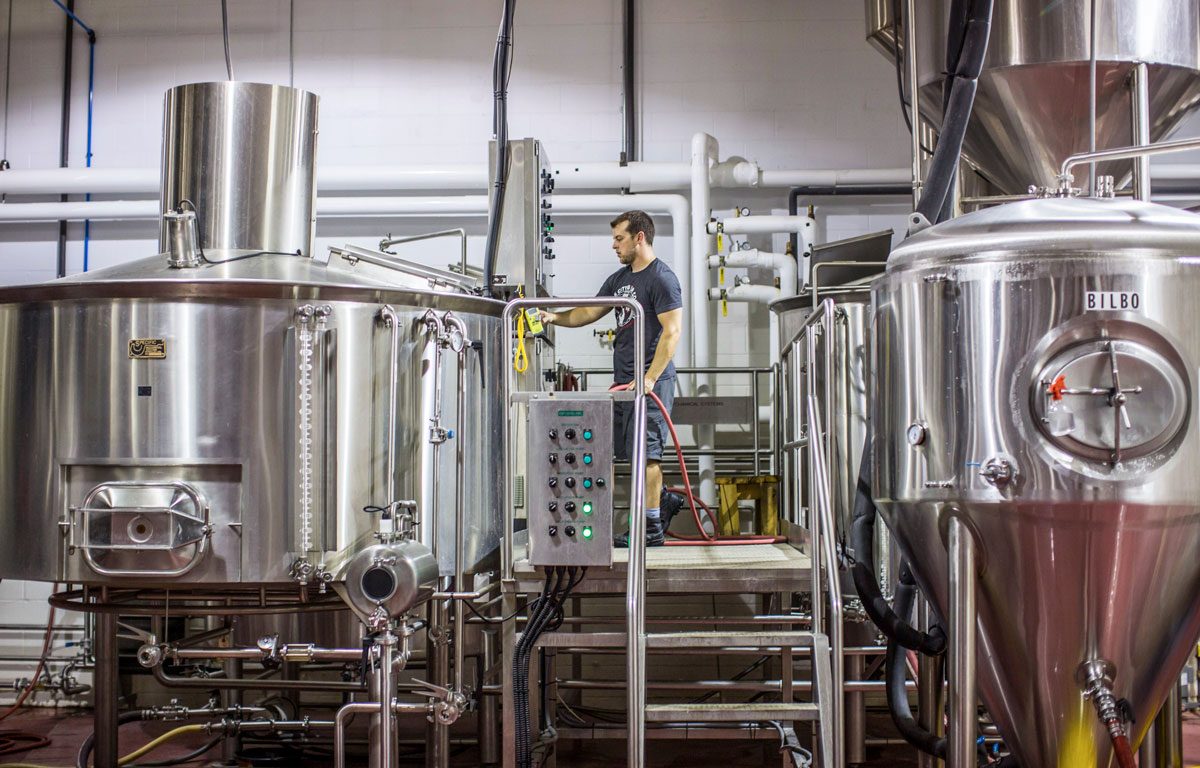
So, why does the Kansas City Bier Company focus on producing traditional German-style beer, especially lagers? For two reasons. We love the flavor of authentic German bier styles, and we believe that other Americans will have the same love affair if they can experience fresh German-style beer brewed in a traditional way.
(More: CraftBeer.com Announces Great American Beer Bars 2019Opens in new window)
While Germans make wonderful beer, imports often lose their freshness during the long warm voyage to retail shelves in the US. Many Americans have probably rejected German imports because they have only consumed old, damaged examples that lost their original freshness and character.
I fell in love with German beer as a college student when I spent a semester in Germany. Not only was the beer fresh, but it was different due to the local ingredients and unique German brewing methods. Before opening our brewery, our head brewer and I toured dozens of Bavarian breweries and interviewed brewers in hopes of understanding the techniques and traditions that we could imitate to achieve our goal of brewing authentic German-style beer that would be served at the peak of freshness.
The following are examples of some of those techniques. We found that our favorite breweries all followed each of these steps, and that is why we do too.
Defining Traditional German Beer
Malt and Hops
“Terroir” is a concept most associated with grapes, but soil, terrain, and climate also affect the flavor of malt and hops. Malt and hops produced in Germany have a different character than domestic varieties. Imported is not “better” than domestic, but it does have a different character that differentiates German from American beer styles. For example, the cooler, wetter growing conditions in central Europe produce a different character than the barley grown on the hotter and dryer Great Plains. We use imported malt and hops to capture the character of German bier styles and provide a unique drinking experience to our customers.
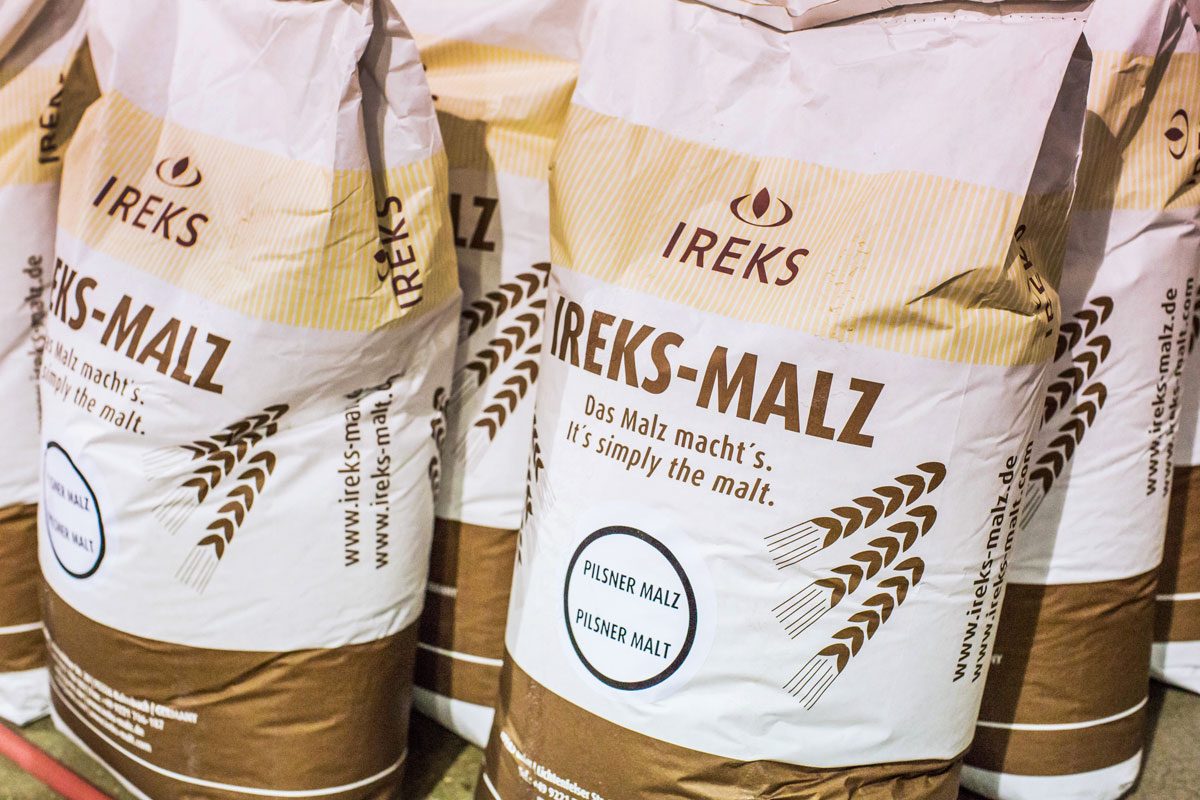
Decoction Mashing
Decoction mashing is a time-consuming process that involves boiling a portion of the mash. In the 19th century, decoction was a common practice in Germany to better utilize under-modified malt and control mash temperatures. Improvements in malting and brewing technology have led most large breweries to abandon decoction in favor of more efficient and less-time-consuming infusion or step mashing techniques. However, I believe that there are subtle flavor contributions from decoction, which still warrant the extra time and costs.
Cold, Two Tank Fermentation and Conditioning
Craft breweries making ales typically use a dual-purpose tank for fermenting and conditioning called a cylindroconical “unitank.” Because warm temperatures allow the yeast to metabolize sugar into alcohol more quickly, prolonged periods of cold maturation called “lagering” are not usually needed for warm-fermenting ales. One reason cold fermented lager beers are popular is they have a flavor and character often described as “crisp and clean.” Under cold fermentation, the metabolism of the yeast slows down, and the yeast produce fewer metabolic flavor compounds like fruity esters and spicy alcohols and phenols. Ales are often fermented, filtered, and packaged in two weeks because the warmer temperature speeds up fermentation and maturation.
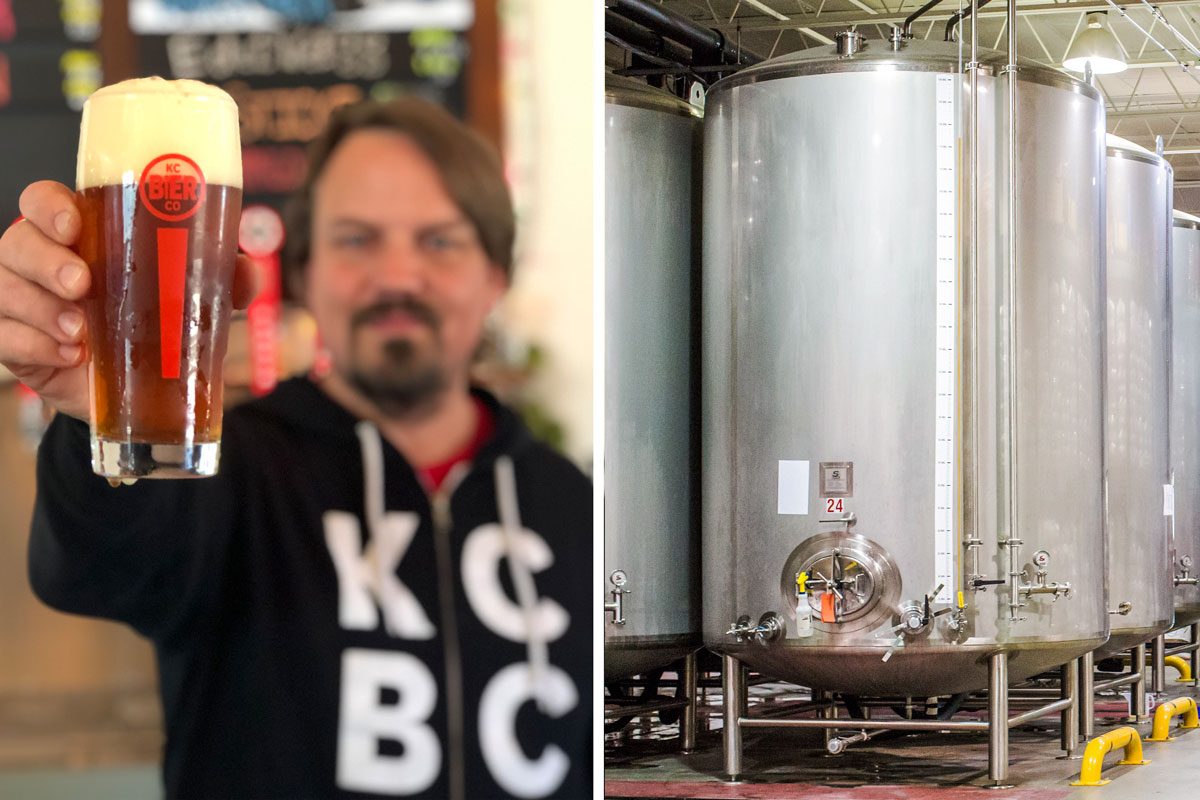
Because many ales are prized for their fruity or spicy yeast character, lagering can also be undesirable.
(More: A Brief History of Hip-Hop Craft BeersOpens in new window)
Traditional lager breweries ferment in a fermenter for seven to 10 days. Afterward, the beer is transferred to a secondary “lagering” tank that is squat or horizontal so there is more bottom surface area for the yeast to contact the beer. Although fermentation is largely completed before lagering, yeast keep cleaning up “young or green” beer flavors over the next two to six weeks to create the classic mellow, crisp character of a lager beer. With advancements in brewing techniques and equipment, brewers debate the necessity of dual cellar tanks for lager beers. The Kansas City Bier Company stands on the side of tradition and employs fermenters and lager tanks.
Because warmer temperatures shorten fermentation times, it is tempting to use increased temperatures to make lager beer, but the higher temperature also causes the lager yeast to produce more esters and other flavors, which causes the beer to lose its classic crisp, mellow, lager character. In my travels, the German breweries that focused on slow, cold fermentation produced the highest quality lager beer.
(Find: A Brewery Near YouOpens in new window)
Natural Carbonation
The two primary by-products of fermentation are alcohol and carbon dioxide. The Kansas City Bier Company traps CO2 from fermentation to naturally carbonate our beer. Besides being required by the German Purity Law of 1516 (aka, Reinheitsgebot), an added benefit of natural carbonation is gas purity. Although industrially produced CO2 is generally of very high purity, it can sometimes become tainted with staling oxygen or off flavors from other impurities.
Reinheitsgebot
The Reinheitsgebot, or Bavarian Beer Purity Law of 1516, is still the basis for modern German brewing regulations. Although the modern application of the Reinheitsgebot is quite complex, the fundamental purpose of the law is to restrict the ingredients in German lager beer to barley malt, hops, water and yeast. That means no industrial acids to control pH; no artificial carbonation; no adjuncts like unmalted grains, honey, or sugar; no flavoring agents other than hops; and no pre-isomerized hop extracts, to name just a few prohibitions.
(Watch: Streetcar 82 Brewing: Sharing the Language of BeerOpens in new window)
I would describe the Kansas City Bier Company as a brewery that “brews” according to the Reinheitsgebot because we use only malt, hops, water, and yeast to brew our beer. But, we do not always “sell” beer that complies with the Reinheitsgebot because we occasionally make certain non-compliant post-production departures from the law. These departures include a few American interpretations of German styles that are dry-hopped and receive artificial carbonation and beers that we age in wooden bourbon barrels or on toasted oak.
Style Innovation
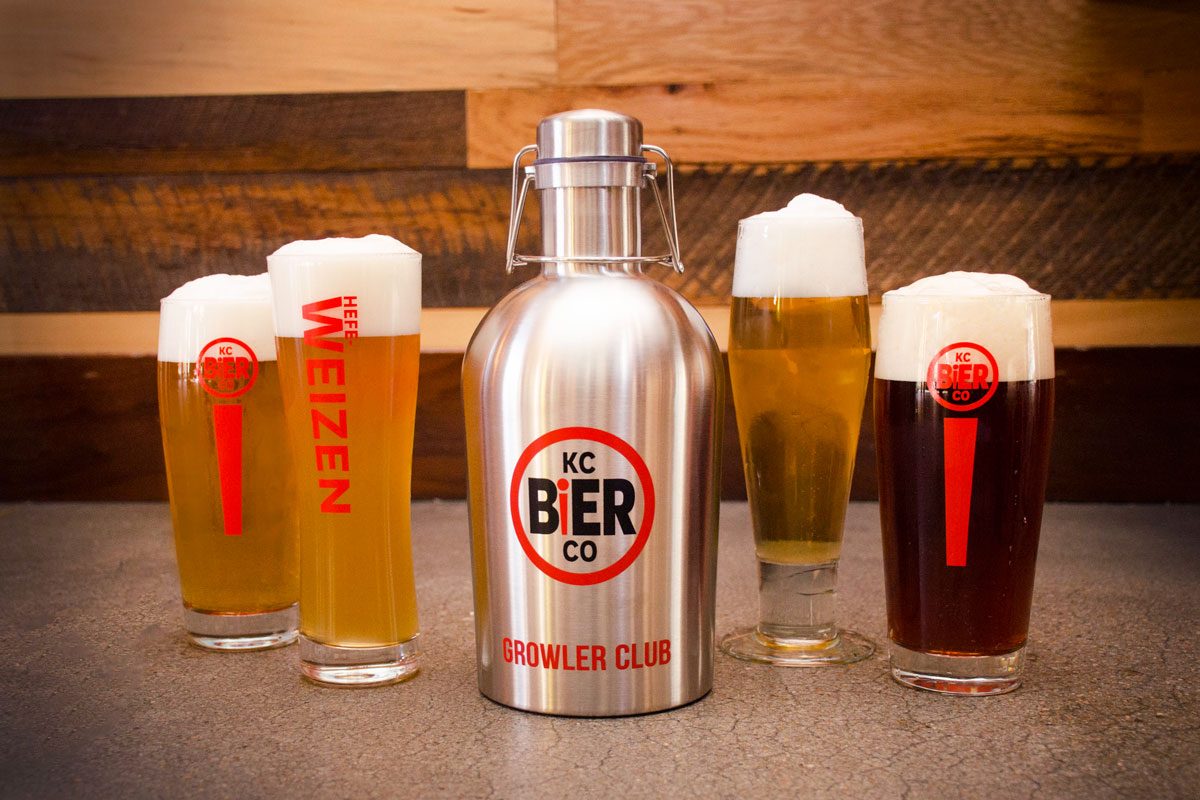
Although we occasionally create a uniquely American interpretation of a classic German style, we generally focus on executing traditional recipes. Understandably, people sometimes question the benefit of limiting the types of ingredients that define beer in such a narrow “German” way. Many craft beer drinkers love breweries that experiment with non-traditional ingredients and methods.
(More: Long Island Brewery Debuts Shipwreck BeerOpens in new window)
The Kansas City Bier Company does not advocate that all breweries should brew according to the Reinheitsgebot. (I like to describe myself as a “Beer Libertarian”). We are focused on making traditional German-style bier, and the Reinheitsgebot is central to that tradition. It is part of the “fifth” ingredient called tradition that helps define what we do and differentiates us from other breweries. By narrowing our focus, we are creating beer in a way different from our local peers, which means we add another unique offering to the diverse range of styles in the Kansas City area. Tradition and innovation both have a role in craft beer diversity.
Sometimes it is tempting to eliminate decoction because no one will notice. If decoction doesn’t make a huge difference, why not lager for two weeks instead of four, and then eliminate natural carbonation, and so on and so forth. I believe such a cynical approach would lead to death by 100 small cuts for our beers. Incrementally the changes are not very noticeable, but when taken together, we would find that our beer has lost that inherent character that makes it unique and special.
Tradition and innovation are both paths that lead to the destination of unique and great tasting beer. At the Kansas City Bier Company, we have chosen the path of tradition, and hope that we will continue to walk it with passion and conviction. Prosit!
CraftBeer.com is fully dedicated to small and independent U.S. breweries. We are published by the Brewers Association, the not-for-profit trade group dedicated to promoting and protecting America’s small and independent craft brewers. Stories and opinions shared on CraftBeer.com do not imply endorsement by or positions taken by the Brewers Association or its members.
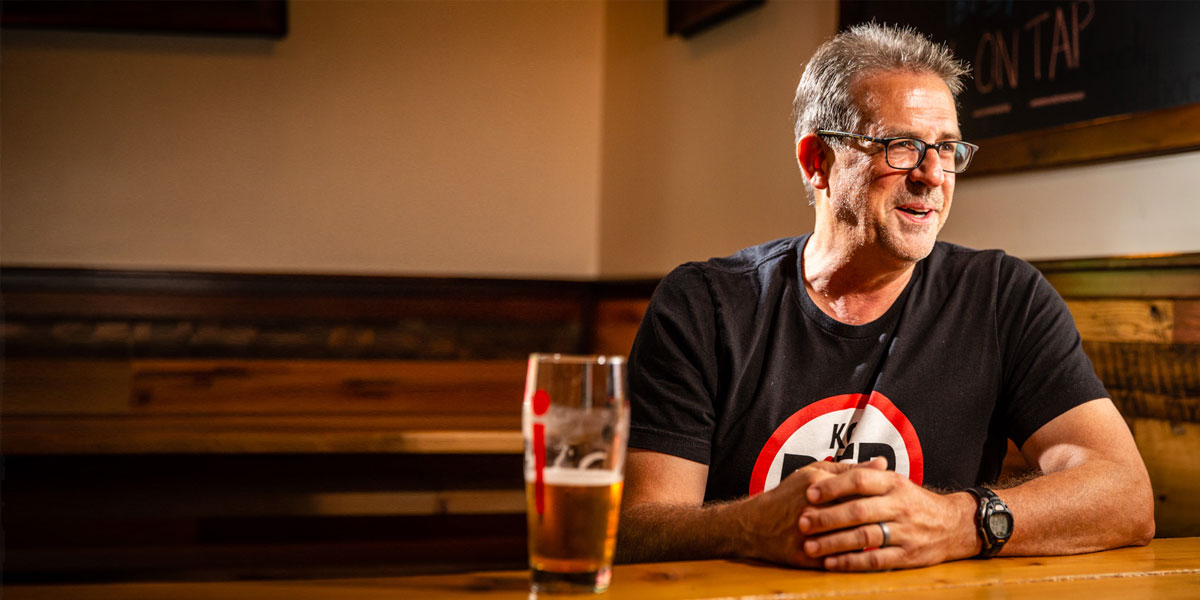
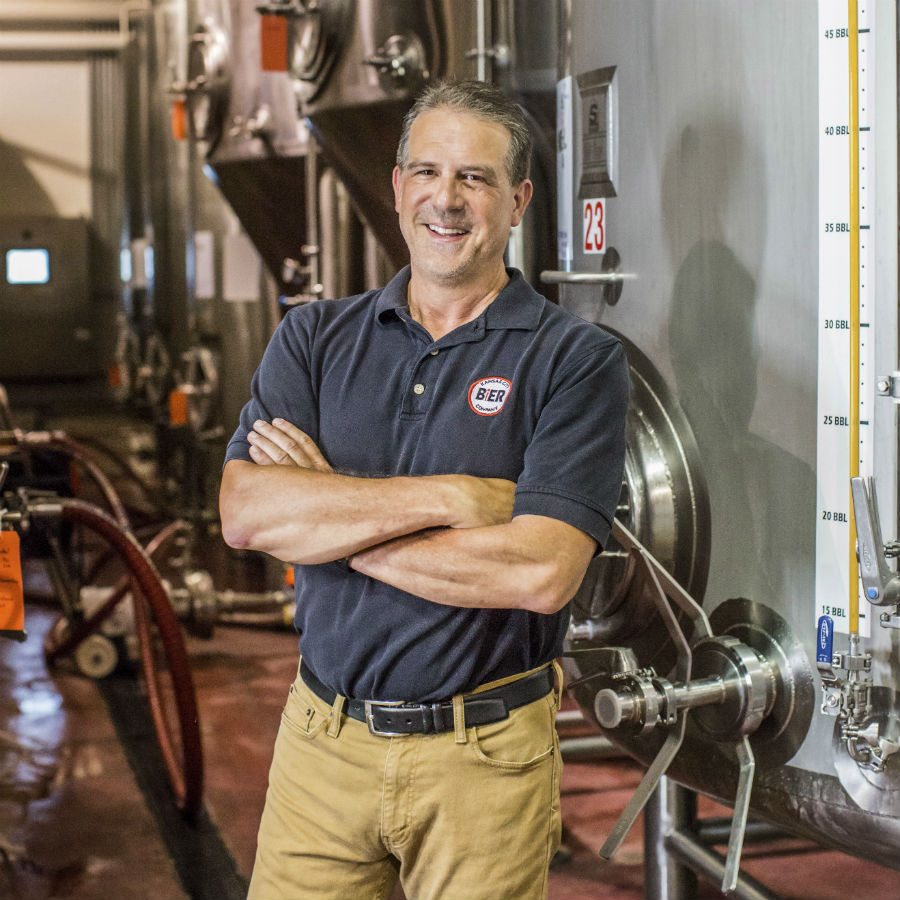
Share Post